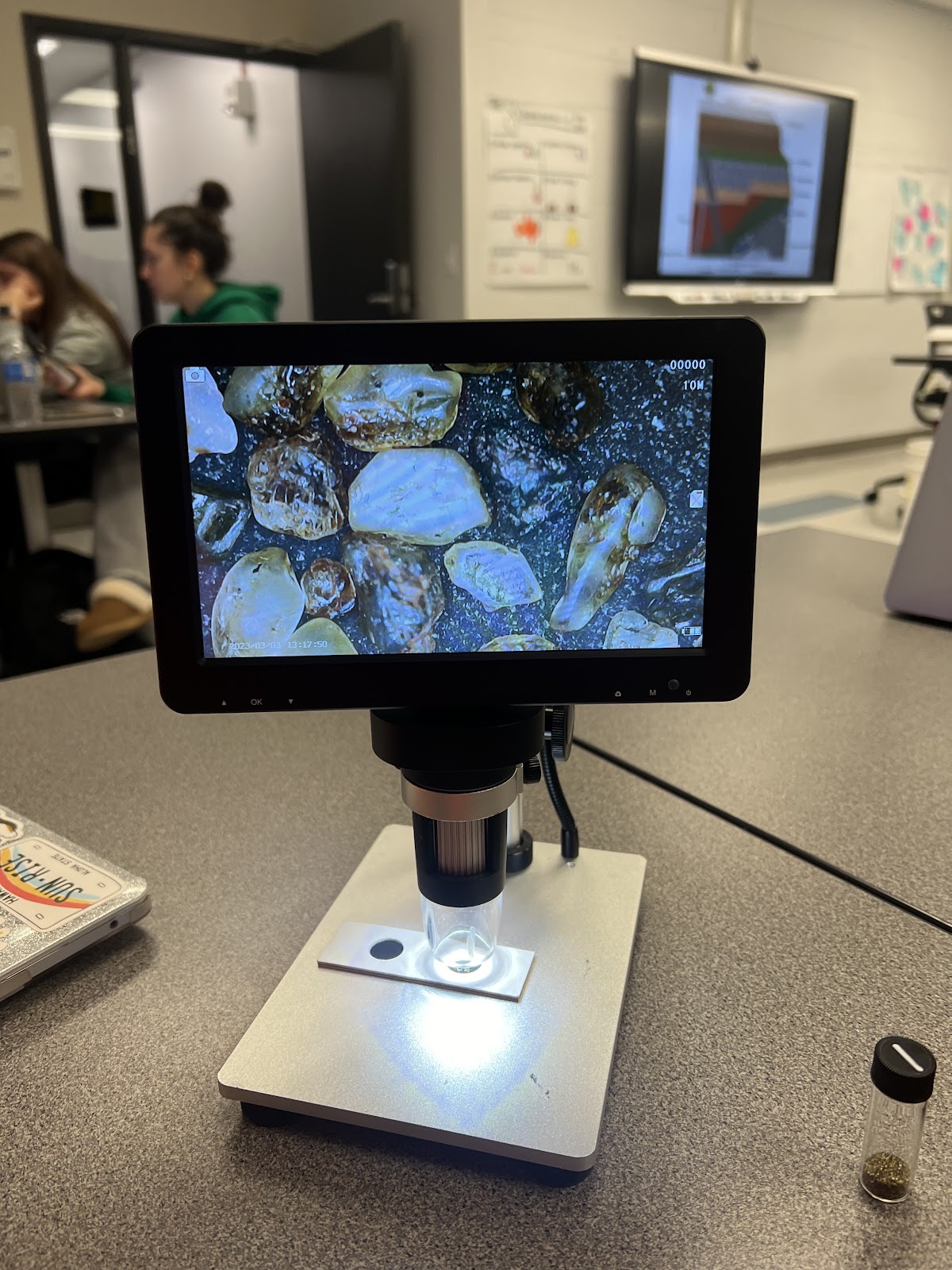Week 11 Blog: Law of Superposition
1. What did you do in lab today?
In lab we discussed the law of superposition. This law says that sedimentary rocks form layers that are buried under other layers over time. Because of this, older rocks are at the bottom of a structure and the rocks on top get younger. We learned that when magma goes through layers of rock, it will spread out if it makes it to the surface because of being a liquid. We learned that sand can be created through wind, water, or glaciers. We did an activity where we are able to look at different grains of sand to see what they looked like close up. We were then able to take a better guess at what formed the sand. My group also put an ant under it which can be seen in one of the pictures below.
2. What was the big question?
Laws of rocks.
3. What did you learn in Thursday's discussion?
In lecture we learned about buoyancy. We learned that to make something float better, you can add salt. We learned that the more sugar something contains, the more likely it is to sink. If buoyancy is more than 1, it will sink. If it is less than 1 it will float. We learned that to find the element, we need to find the specific gravity. Specific gravity= W (air)/(W (air) - W (water))
Pressbook Chapter 17
1. What did you learn?
I learned about Archimedes' Principle. This principle states that the weight of an object is equal to the weight of water that is displaced when the object is placed in water. I learned that this is how we can tell how dense a geode is.
2. What was most helpful?
I think the most helpful thing was the TedEd video. This video helped me to better understand Archimedes' principle and how it came to be.
3. What do you need more information on?
I would like more information about how geodes form. I am still a little confused about how they are hollow. I also am not sure why the crystals still leave part of the inside hollow. Why don't they make it solid inside?
What questions, concerns, and/or comments do you have?
Is there any way we can tell where sand came from if we do not put it under a microscope?


Comments
Post a Comment